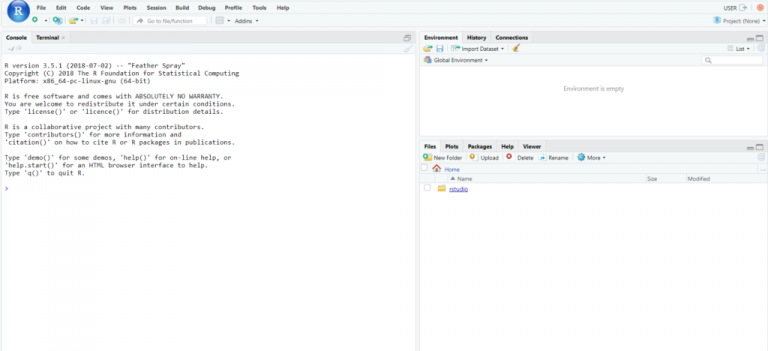
So let's start with writing following code in a text file called test. Usually, you will do your programming by writing your programs in script files and then you execute those scripts at your command prompt with the help of R interpreter called Rscript. There are four things you need to run the code in this book: R, RStudio, a collection of R packages called the tidyverse, and a handful of other packages. Here first statement defines a string variable myString, where we assign a string "Hello, World!" and then next statement print() is being used to print the value stored in variable myString. In this R Studio online course, you will be walked through a range of topics starting from introduction to the subject to creating.

#BASICS OF RSTUDIO HOW TO#
This will launch R interpreter and you will get a prompt > where you can start typing your program as follows − The R Studio course will help you learn how to import data into R Studio, read the data, and use various tools and techniques to process the raw data to obtain valuable insights.

Once you have R environment setup, then it’s easy to start your R command prompt by just typing the following command at your command prompt − Depending on the needs, you can program either at R command prompt or you can use an R script file to write your program. RStudio is more than simply a graphical user interface (GUI) for R it is an open source integrated development environment (IDE) that includes a console.

As a convention, we will start learning R programming by writing a "Hello, World!" program. This page discusses R installation, RStudio, operators, data types, creating variables, importing data, functions, and installing.


 0 kommentar(er)
0 kommentar(er)
